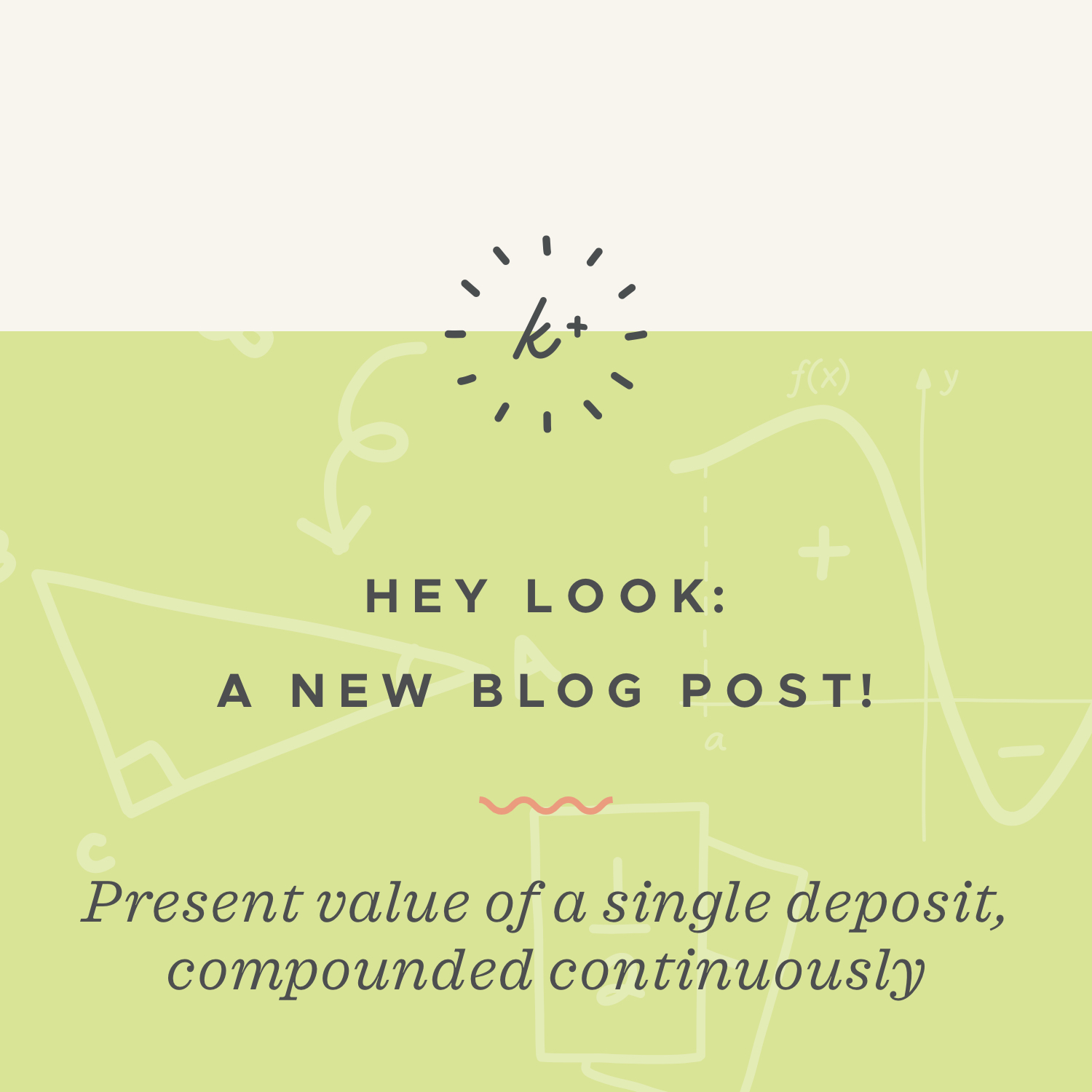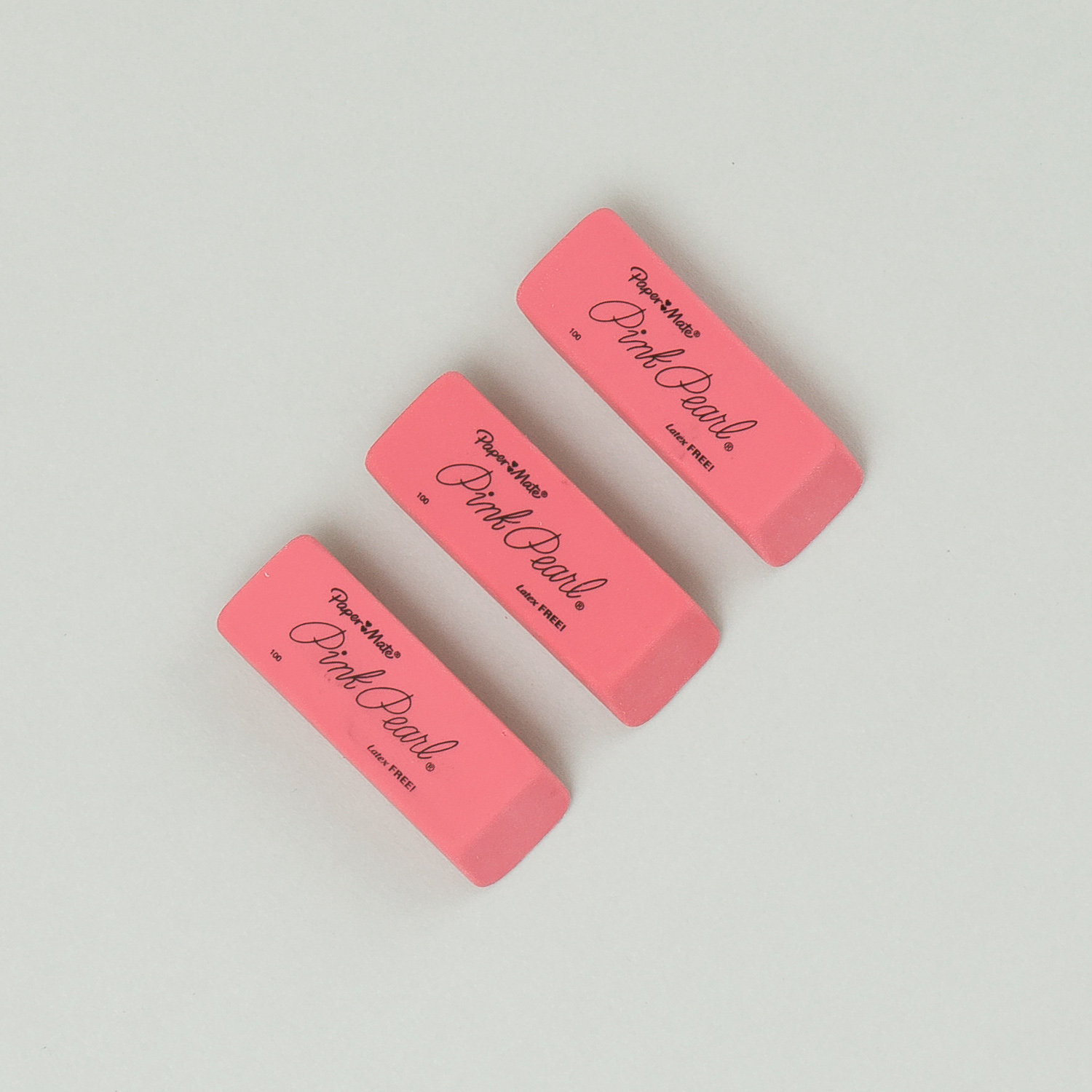Present value of a single deposit, compounded continuously
Present and future values, single deposits and income streams, compounding and continuous compounding
When we study present and future value in calculus, usually we’re trying to calculate the amount a sum of money will be worth in the future after it’s had time to grow and earn interest, or we’re trying to calculate how much money we had in the past given the sum of money in the account today.
The present and future value formulas we use will vary depending on the rate at which interest is compounded, and whether we’re calculating the value of a single deposit, or a continuous income stream.
Hi! I'm krista.
I create online courses to help you rock your math class. Read more.
An example of finding future value of a single deposit with continuously compounding interest
Example
Find the value after ???5??? years of an investment that’s worth ???\$ 1,500??? right now, if the interest rate is ???6\%??? compounded continuously.
Here’s what we know.
???PV=1,500???
???r=0.06???
???t=5???
Plugging these into the future value equation for interest compounded continuously for a single deposit, we get
???FV=1,500e^{(0.06)(5)}???
???FV=2,024.79???
The value of the account after ???5??? years is ???\$2,024.79???.
Video walkthrough of calculating present value of a single deposit
Take the course
Want to learn more about Calculus 2? I have a step-by-step course for that. :)
All about present and future value
Keep in mind that present value is the opposite of future value. Future value is how much we need to have at some point in the future; present value is how much we need to have right now.
Single deposit, or one-time deposit, means that we’re depositing money into an account once, and then not adding any more to it or taking any amount away from it. So we make one deposit one time, and then don’t touch it. That’s different than an income stream problem, where we might make regular deposits every month, or every year, or make regular withdrawals.
To find the present value of a single deposit when interest is compounded continuously, we need to know future value, interest rate, and the time between now and when we want to reach the future value amount
Compounded continuously, or continuously compounded interest, is when interest is being compounded constantly into the principal balance. That’s in contrast to interest that’s compounded a certain number of times per year, like every year, every quarter, or every month. We use certain formulas with continuously compounded interest, and a totally different set of formulas for interest compounded a certain number of times per year.
To find the present value of a single deposit when interest is compounded continuously, we need to know the future value that we want, the interest rate, and the time between now and when we want to reach the future value amount. For example, if we know we want $10,000 in our account in 5 years, and we know the account pays 7% interest compounded continuously, then we’ll be able to use our formula to find the present value amount that we need to have today in order to get there.






